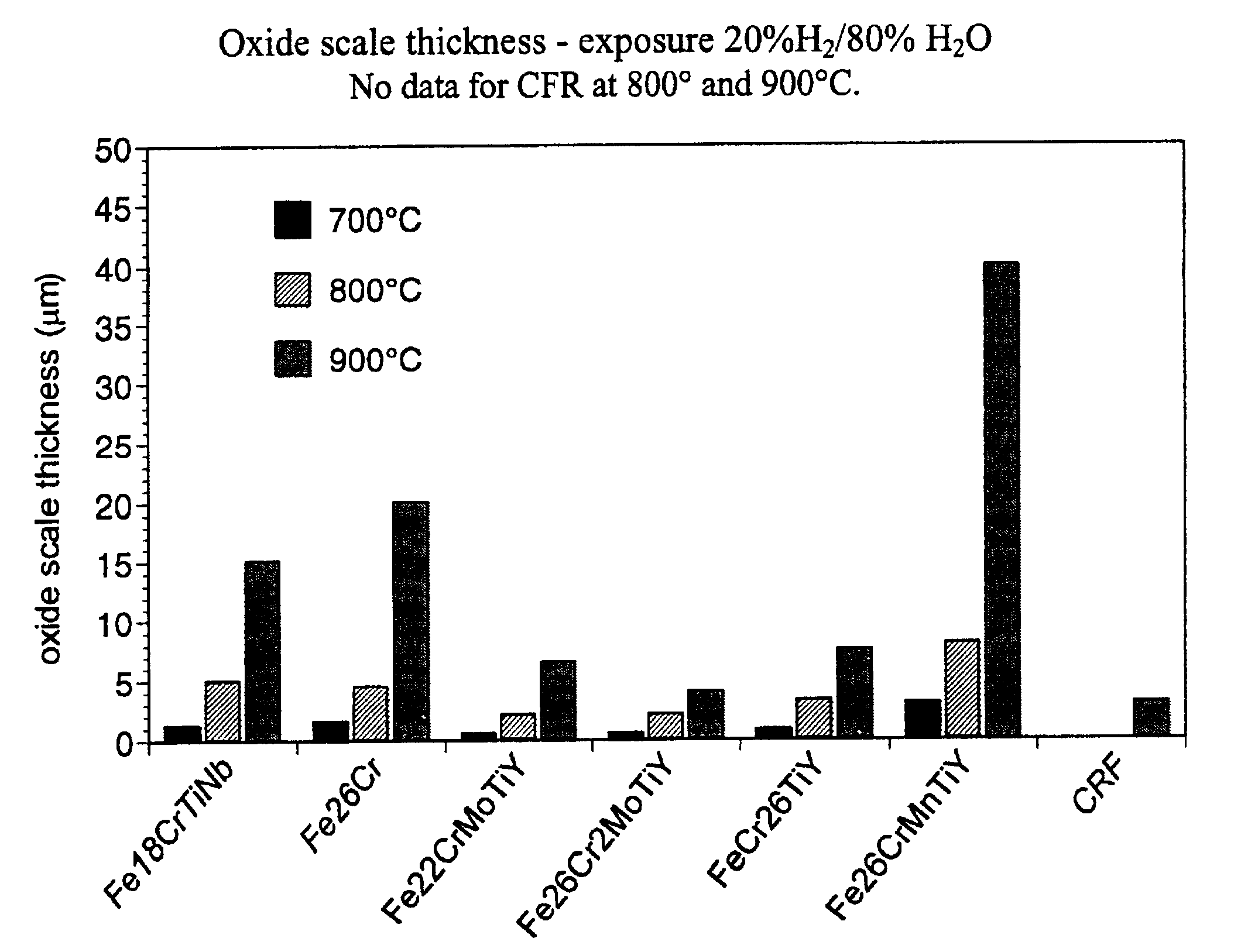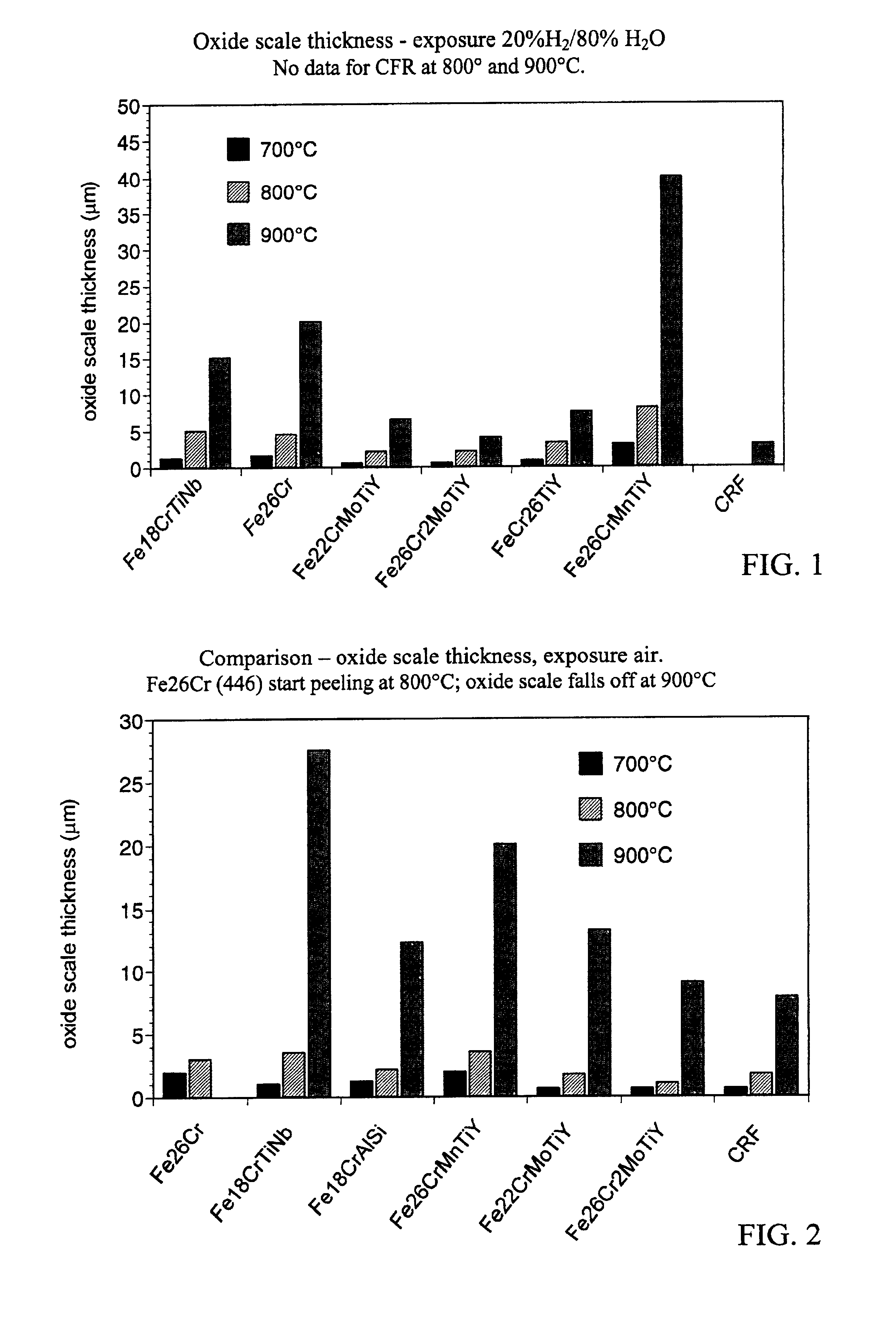Current collector for SOFC fuel cells
a collector and fuel cell technology, applied in the field of current collectors, can solve the problems of unattractive overall fuel cell system, inability to completely avoid superficial oxide growth, and inability to predict the measures aimed at further matching properties, etc., and achieve the effect of high resistance to corrosion
- Summary
- Abstract
- Description
- Claims
- Application Information
AI Technical Summary
Benefits of technology
Problems solved by technology
Method used
Image
Examples
example 1
The material according to the invention, having the composition Fe, 22% by weight of chromium, 2% by weight of Mo, 0.29% by weight of Ti, 0.37% by weight of Y is processed by powder metallurgy to form the current collector component.
For this purpose, powders of an Fe--Y prealloy are mixed with the metal powders of the other alloying constituents. The alloying powders have a grain size fraction in the range from 30 to 160 .mu.m and are mixed with pressing auxiliaries during the mixing. The powder mixture obtained in this way is pressed in press molds at a pressure of 8 t / cm.sup.2 to form a near net shape current collector plate. Accordingly, all the passage systems for the gaseous media which run on the surface of the plate have already been formed in the compact. The further processing of the compacts to form finished current collector plates takes place by means of sintering at temperatures of 1400.degree. C. in a hydrogen atmosphere. If necessary, the current collector plates obta...
example 2
An alloy of the composition Fe, 26% by weight of Cr, 2% by weight of Mo, 0.25% by weight of Y, contains as impurities 0.08% by weight of Mn, 0.05% by weight of Nb. This alloy is pressed by powder metallurgy to form a cylindrical compact and the compact is then processed into a sintered blank by sintering in an H.sub.2 atmosphere at 1400.degree. C. The sintered blank is cut into disks, and the surface gas-guiding passages are produced by means of mechanical or electrochemical processes. Two current collectors which have been manufactured in this way, as cover plates, are combined with the thin films comprising anode and cathode material and with a gadolinium oxide-stabilized cerium oxide SOFC electrolyte to form a cell unit and are tested at a cell temperature of 800.degree. C. under the standard fuel gas and exhaust gas atmospheres for an operating time of 650 hours. In addition to the mechanical stability of the individual cell components, in particular the corrosion properties of ...
PUM
| Property | Measurement | Unit |
|---|---|---|
| temperatures | aaaaa | aaaaa |
| temperatures | aaaaa | aaaaa |
| electrical voltages | aaaaa | aaaaa |
Abstract
Description
Claims
Application Information
 Login to View More
Login to View More - R&D
- Intellectual Property
- Life Sciences
- Materials
- Tech Scout
- Unparalleled Data Quality
- Higher Quality Content
- 60% Fewer Hallucinations
Browse by: Latest US Patents, China's latest patents, Technical Efficacy Thesaurus, Application Domain, Technology Topic, Popular Technical Reports.
© 2025 PatSnap. All rights reserved.Legal|Privacy policy|Modern Slavery Act Transparency Statement|Sitemap|About US| Contact US: help@patsnap.com


